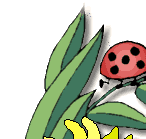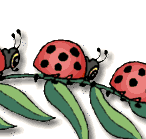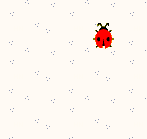|
Trapped In Frames... Click
Here To Escape

Did you know that?
-
During the Middle Ages, swarms
of pests were destroying crops, so farmers prayed to the Virgin Mary, the
mother of Jesus, for help. Soon after, ladybugs came and ate the bad pests
and saved the crops. The farmers called these bugs, "Beetles of Our Lady"
and they eventually became known as "ladybugs".
-
In many countries, ladybugs are
considered to be good luck. Just like the four-leaf clover and the horseshoe,
the ladybug is thought to bring good luck to people. I am sure that this
is because of how the ladybugs are always saving crops from bad pests.
So, to the farmers especially, ladybugs, are definitely good luck!
-
There are hundreds of different
kinds of ladybugs all over the world. There are about 500 different kinds in the United
States and nearly 5000 world wide. They come in all different colors, too.
Reds, yellows, orange, grey, black, even blue.
-
Since ladybugs are really beetles,
they are sometimes called lady beetles.
-
Four ladybugs were sent into space
in 1999 on NASA's space shuttle led by Eileen Collins. Ladybugs and their
main food, aphids, were sent to a zero-gravity environment to study how
the aphids could get away from the ladybugs without being able to jump using
gravity.
According to the STS-93
Pilot Jeffrey S. Ashby, "...I'm told that the ladybugs
on Earth will climb up a stalk to capture the aphids, and the aphids will
use gravity to assist them to fall off of the leaf to escape from the ladybug.
The question is, how will these defense mechanisms work in the absence
of gravity, and what will happen to the relationship between predator and
prey? One of the things that extra time has allowed us to do is to come
up with names for the four ladybugs that we have. I think they have been
very appropriately named after The Beatles: John, Paul, Ringo, and George..."
Results of the Experiment:
Upon completion of the mission, it was determined that the ladybugs survived
and did eat the aphids while in a microgravity environment. Ladubugs do
very well in space!
Below you'll find links to more
amazing facts about these wonderful insects. You will also find other
fun and educational links that involve ladybugs. If you know of a
great page that is either fun or informative and involves ladybugs, be
sure to email me. My Mom and I would love to review it and then add it
if it is cool.

To move around just click the ladybugs -that aren't
moving "giggle"!
 |
Ladybug Life Cycle Diagram:
This a wonderful drawing to color and label for a school science paper. |
 |
The Ladybug Story:
The Ladybug Story recounts the true tale of how a group of school children used the legislative process to make the ladybug the Official Bug of the State of Massachusetts. The story is told using both animation and writing. |
 |
Principals and Standards for School Mathematics:
Hard to believe that ladybugs can help one with math, but these are very fun things to do on line! Learn geometry and measurement concepts by creating paths and navigating mazes. |
 |
Ladybug Legends:
CelticBug has lots of pages on ladybugs. This page is a compilation of ladybug legends and other interesting info. |
 |
Ladybug E-Cards:
There are several places to get ladybug e-cards, but I really like these.
|
 |
Ladybug, Ladybug:
Maybe you are doing a play, or maybe you need an inexpensive costume. Find out how to make a ladybug costume from a paper bag!
|

I would like to hear from everybody, but if you don't want my Mom to see it, don't send it. She loves me and just wants to keep me safe.
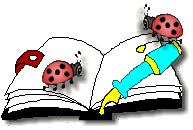

Go ahead and bug me!
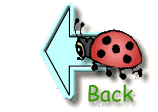


|




